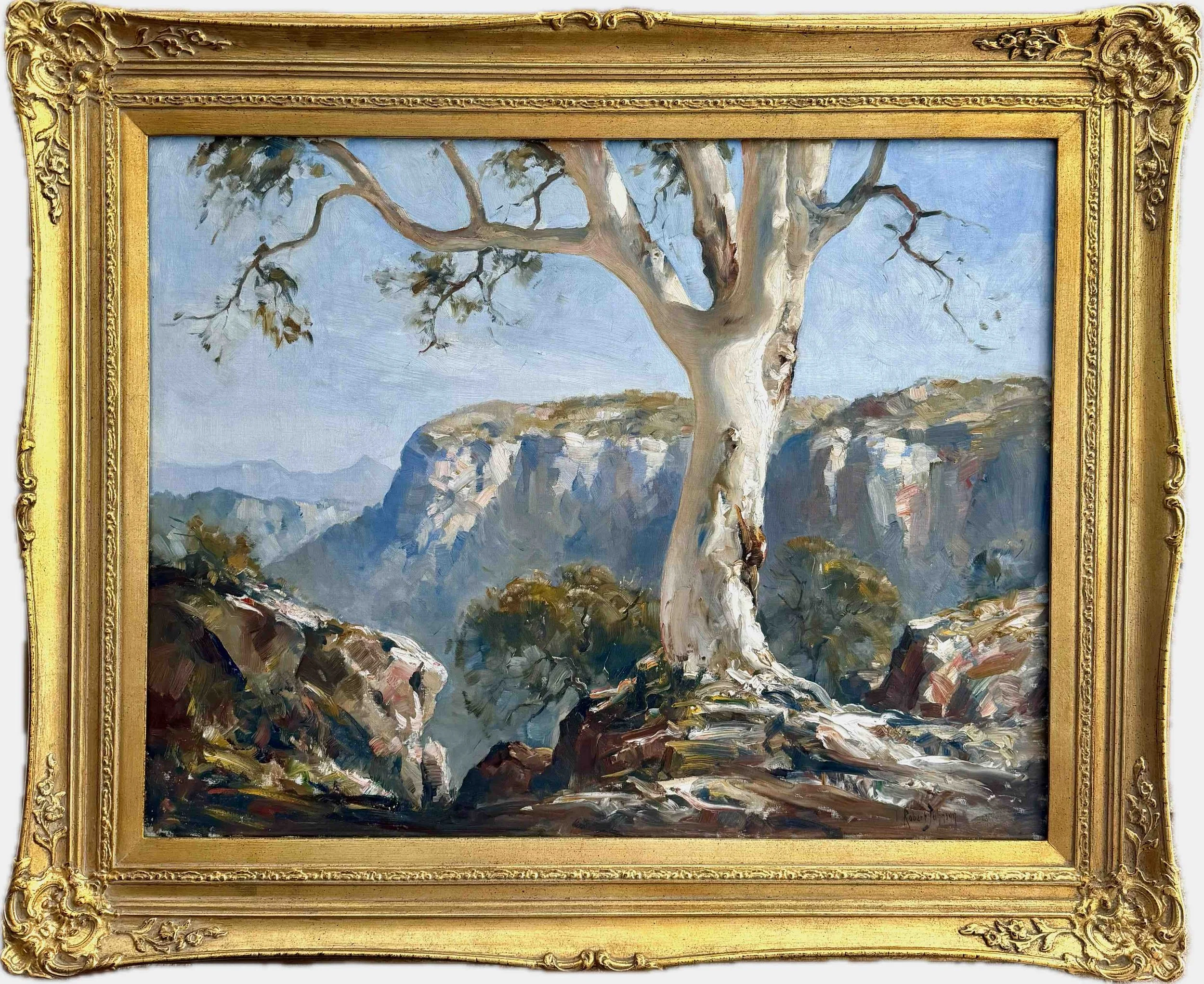Elizabeth Caroline Armstrong | Dahlias 1923
ELizabeth Caroline Armstong
Dahlias 1923
Oil on canvas
34.5 x 44.5 cm
Signed middle right
Original frame
Original label verso
$2600
Elizabeth Caroline Armstrong (28 September 1859 – 21 February 1930)
was an Australian artist and art teacher. She was the first in a long line of influential female art educators appointed to the South Australian School of Design. According to one art historian, she was the first woman to hold a teaching post in a major Australian art school.
Gill proposed Armstrong as Painting Mistress in his plan to merge the two schools after Tannert’s resignation in 1892. He stressed her ability and qualifications and asserted the benefits of a female teacher for a largely female student body. Gill was made head of the School of Design and Painting, and Armstrong was appointed at a salary of £100 per annum, substantially lower than what Tannert had enjoyed as head of school. Her post commenced in February 1893.
Armstrong was the first in what art historian Catherine Speck has called the ‘long and distinguished tradition of employing women artists as educators’ at the South Australian School of Arts and its predecessors. Her students who went on to become teachers at that institution included Gladys Good, Margaret Kelly (later Walloschech), Beulah Leicester, Jessamine Buxton, Gwen Barringer and Dora Chapman. Another student was Stella Bowen, whose oil painting of oleanders was one of the works from Armstrong’s still-life class that impressed critics in an exhibition in May 1912.
Armstrong exhibited floral paintings with success. Her Hollyhocks were among a number of paintings from South Australian artists sold in the 1898 Exhibition of Australian Art in London. She received praise for Wattle from Sunny New South Wales and Cosmos in the Society of Arts’ Federal Exhibition in the Institute Building in 1900. In 1903 her oil painting, Ranunculus, was hung in the Federal Exhibition and then purchased by the Art Gallery of South Australia. A gallery catalogue later described it as a ‘fine floral study’ and ‘one of the many successes that this artist has achieved’ in this genre. Catherine Speck suggests that Armstrong should be acknowledged as an early painter of Australian flora and refers to her ‘majestic’ Waratahs c.1906. Three of Armstrong’s paintings were included in the First Australian Exhibition of Women’s Work in Melbourne in 1907, and she continued to exhibit locally with distinction until her retirement.
Armstrong was the first female office-bearer in the Society of Arts, serving as Vice-President from 1923 to 1928 and as a member of its council for 26 years. She was also president of the Art Club, another society for exhibition and discussion, from 1918 to 1920.
From the end of 1913 until the end of 1914, she took leave-of-absence from her teaching post to visit art schools and galleries in London, France, Italy, and Russia. Subsequently, she delivered a number of lectures and talks on aspects of international art at the Art Gallery and to art groups.
Teaching was a vocation for Armstrong, and she did not end her employment at the School of Arts and Crafts until her seventieth birthday, the Education Department’s date for compulsory retirement. She had held the post for over thirty-six years.





